Maybe it’s my own creeping seniority or the aching knees, chronic back pain and the general disdain for that morning “warm-up” period — you know, that time it takes to find a limp-free gait from the bed to the bathroom — but I’m starting to appreciate older things these days.
First, older things are still around because they’re worth having around, right? They’re of value. They function. They serve a purpose. They work.
Of course “older” is relative, particularly when you spend a lot of time with younger people. Older, if played correctly, can translate into important traits, like wisdom and restraint. Patience. Thoughtfulness. Consideration.
In the eyes of many, older means worn down and maybe rusty or a bit fragile. It’s true. Older means things generally move a bit slower and maybe function at an analog pace. It means everything is more deliberate.
As I sat in the front of the panga as it glided over the transparent flats just outside the mouth of the Belize Olde River, I had age on my mind. At 54, I guess I’m not technically “old.” But my fishing partner for the week was a vibrant 25-year-old striper angler with a butter-smooth cast and a penchant for moving in quick, endless spurts. He’s a blur. As a friend of mine recently described him, “He’s busy.”
But being deliberate on the flats is a good thing. Patience pays off in spades. And, as our guide for the day, John Moore of Belize River Lodge, cut the motor to the panga and glided into a little bay nestled up against a mangrove cay, patience was going to prove valuable. John, like me, is a bit more seasoned. Although, at first blush, you’d never know he’s well into his 60s. Days spent pushing visiting anglers around the flats in search of bonefish, permit and tarpon will keep you in pretty good shape.
I climbed up to the casting platform, my trusty (and older) 7-weight strung up with an older, impeccably cared-for saltwater fly line, and I immediately fell into flats mode. Staring through polarized lenses into the clear water of the Caribbean, I was deliberate.
Down on the bench seat on the panga, Camden, my much-younger fishing partner for the week, was a constant display of perpetual motion. He dug through his bag for the right camera and the right lens. Insufficiently slathered with sunscreen, the Mainer coated his face and legs one more time. Then it was time to adjust the gaiter, tilt the hat just right or dig through the bag again for some other piece of vital gear that suddenly sprung to mind. It was dizzying.
Finally, John, in his creole accent, uttered the phrase I wanted to shout.
“OK, now,” he said. “Seet still, mon. The bonefish can ‘ear you.”
John polled the panga along the edge of the mangroves and slowly waved his arm to his left.
“Dis is where da beeg ones are, mon,” he said. “Keep ya eyes up, OK?”
Indeed, this was familiar fishing for me. I spent two weeks last fall just a bit farther north in Ascension and Chetumal bays along the Mayan Riviera, and John was right. While we might, indeed, encounter the ubiquitous school of two-pound Belizean bonefish, the bigger specimens in the five- and six-pound range often break away from the masses and cruise in tighter groups of three or or four fish — and they really like to nose up tight to the mangroves where the food is plentiful and the structure gives them some security from predators like barracudas and sharks.
Or from aging fly fishers with the patience to seek them out.
The flat seemed barren. And, frankly, it almost always does, at least until you get the feel for it, and reacquire the “fish eye.” At first, every little movement inspires a reactive tick that takes discipline to control. As we glided along the mangroves, no bonefish appeared. As the minutes passed, I started to spot and recognize the little snappers (and some not-so-little snappers) that dwell in the skeletal wells of mangrove roots, and, now and then, a foot-long barracuda would scatter the baitfish like bully shoving his way down a Hell’s Kitchen alley.
And then, just like that, we arrived at the tip of the cay. Still no bonefish.
But then, out of the corner of my eye, I saw some movement. Bigger movement. Bold movement — not the deliberately shy glide of a bonefish, but the brazen push of water that only a predator can make happen. There, as the flat abruptly dropped off into a deeper channel, a big, bold jack crevalle patrolled the edges, looking for one of the smaller fish that squeezed into the root well of the cay’s last bunch of mangroves to make a mistake and maybe end up as dinner.
“Hand me that 10–weight,” I said quietly to Camden, just as John instinctively flipped the panga on its axis to give me an unimpeded backcast. To his credit, my young fishing buddy, reached over and seamlessly slid the much-bigger 10-weight rod from the boatside tube and traded it for the 7-weight. I unhooked the Tarpon Toad from the rod guide, pulled 30 feet of line off the reel and made a quick cast. The fly landed about five feet from the prowling fish, and there was no hesitation. Seconds later, I watched as bright blue 30–pound backing slipped through the rod guides as the jack ripped across the flat toward the distant skyline of Belize City.

“How big is that fish?” I heard Camden ask as I struggled to tighten the drag just enough to slow the big fish down but not so tight that the 30-pound stretch of bite tippet might come undone from the rest of the leader. It’s a tightrope affair, fighting fish as strong as this one was.
“About 25 pounds, mon,” John said. “Dis a nice fish.”
It took a good 20 minutes before we got the fish to the boat and to hand, and John was quick to appreciate the moment.
“You didn’t panic, mon,” he said as we worked to revive the spent predator. “A lot of guys … they would have panicked.”
“I’m too old to panic,” I said.
More than just the flats
When we arrived at the lodge, Mike Heusner, who’s owned and operated the beautiful establishment on the banks of the Belize Olde River since the 1980s as part of the Miles-Heusner family, convinced me to put in the time and to chase tarpon. While I’ve caught tarpon in the past, I’ve never really set out for a full day of deliberate tarpon fishing. That was about to change.
“They’re right out the front door,” he said, motioning through the screened windows of the lodge’s veranda.
“What gear did you bring?” he asked. I told him the biggest rod I had with me was a 10-weight, and he shook his head.
“You’re going to need a 12,” he said, matter-of-factly. “We have one for you.”
And, he noted, he paired me and Camden with John, whose nickname in the region is “the Tarpon King.” Over the years, John has helped the lodge’s clients land thousands of tarpon in the area’s rivers and on the nearby flats. It’s his thing.
And Mike wasn’t kidding when he said the fish were right out the door. After our first breakfast at the lodge, we wandered across the meticulously manicured lawn to the dock, right on the river. As we climbed into the panga, a school of juvenile tarpon boiled 20 feet from the boat.
The Belize Olde River isn’t the same urban river that flows through Belize City, a good 10 miles from the lodge. Instead, it’s a classic jungle river that flows deep and green into the bay after coursing through the banyan trees and the giant palms of the forest. It starts high in the jungle and flows more than 100 miles before it reaches the bay. Its water is pristine and home to all sorts of fishy denizens from jacks and snappers to snook and the prized tarpon that range in size from feisty 5-pound babies to hefty 100-pound titans that’ll test any tackle and any angler’s mettle.

I wasn’t convinced that I’d be an enthusiastic tarpon angler. I’ve always found the fish to be moody and streaky — and, for an older guy who just wanted to glide over the flats on a spot-and-stalk bonefish and permit adventure, I wasn’t interested in fish that seemed to spend half their time sulking. But, as I retrieved a cast from under a sunken banyan tree not 10 minutes upriver from the lodge, something happened. I became a tarpon fisherman.
Just as my big purple streamer coursed from the emerald depths of the river, a giant silver kraken about five feet long screamed out of the depths and grabbed the fly. A second later, it rocketed from the river amid a waterpark of splash and spray. And there, in my mind, it froze against the jungle backdrop.
The sun reflected off of its chrome armor, and its big, bulbous eye seemed to stare into my soul, and take measure of my worthiness. Then the giant fish slapped back into the water. The commotion of it all caused a flock of parrots to take flight from the nearby trees, and a family of howler monkeys let loose with a round of raucous roars.
“Holy mother of …” I managed to mutter as I dipped the rod to keep the line tight to the giant fish. The rod dip worked the first time and the big fish bulldogged to the bottom of the river. A minute later, it blew out of the water like a Trident missile and I watched as the fly pulled away from its big, silver lips. Just like that, it was gone.
And that scene, to varying degrees of success and failure, repeated itself over and over again. The Tarpon King was holding court.
The week we spent at Belize River Lodge was an exercise in tropical fly fishing diversity. Certainly the flats were productive. We managed to catch dozens of nice bones, including some of the bigger fish that John liked to stalk along the edges of the mangroves. We also had our chances with the bay’s wily permit, but the only one I connected with managed to pop the fly a few minutes into the fight. We even managed to find rolling tarpon on the flats — some of the bigger fish were life-changing.
The lodge
Don’t let the location of Belize River Lodge fool you. Situated not 10 minutes from the largest airport in the country, it’s easy to make assumptions about it. Instead, consider its proximity to the airport to be a bonus — there is no five-hour shuttle ride into the hinterlands to a lodge that depends on a shaky electric grid or the whims of a diesel generator to function as it should. Instead, after collecting your luggage and clearing customs, you can enjoy a rum and Coke over ice with Mike on the lodge’s veranda in about 10 minutes.
And, no, you don’t feel as if you’re in the midst of a city. The airport is actually situated in Ladyville, a bedroom community to Belize City, and once you step off the boat at the lodge — the commute requires a quick ride across the river after a five-minute car trip — you realize that the location is anything but urban.

Belize River Lodge is the first lodge ever built in Belize — it welcomed guests as early as the 1960s. Since then, it’s been lovingly updated and maintained.
Yeah, it’s an old lodge with no shortage of Caribbean class. And, as I said, I’ve come to appreciate older things that still function well. By all accounts, judging by the Miles-Heusner family hospitality and the river-facing accommodations, older, in the case of Belize River Lodge, is better. But there is something relatively new about the operation.
The family has launched a new outpost cottage well out into the Caribbean from the lodge on the river. Long Caye Outpost is situated on a lonely island and is ideal for groups of anglers who want the “private island” experience, as well as some of the best flats fishing in Belize right off the beach. The outpost has three bedrooms and a full bathroom. It faces the ocean and is one of the more unique fly fishing experiences in the tropics. It’s about a 45-minute panga ride from Belize River Lodge to the remote outpost on Long Caye.
If you go
Getting there
Anglers hoping to chase tarpon on the Belize Olde River, as well as bonefish, permit, and much more on nearby flats, fly into the Belize City Philip S.W. Goldson International Airport (BZE) in nearby Ladyville. There are numerous daily flights from a number of U.S. hubs and United (Houston), Delta (Atlanta, Minneapolis), American (Dallas, Miami, LA) and Alaska (Seattle, LA) airlines all fly to BZE non-stop from the U.S.
Choosing an outfitter
Belize River Lodge is an obvious choice, both for convenience and for angling variety. Additionally, the Long Caye Outpost offers another angling option for groups of four or six. The flats fishing from the outpost is excellent, and a small staff from the lodge accompanies guests to Long Caye to see to all their needs. But there is no shortage of fly fishing lodges in Belize, and many of them fish the same flats that anglers fish from Belize River Lodge. In fact, some lodges will actually bring clients south from as far away as San Pedro to the mouth of the Belize Olde River in search of tarpon.
When to go
Many Belize fishing lodges are open year-round, but are predictably busier in the fall, winter and early spring. By June, as the weather heats up, guests don’t show up in droves like they do in January or February. But, if you’re after tarpon, both in the rivers and on the flats, June is a great time to visit. Yeah, the weather can be a bit sultry, but the lodge and its guest rooms are air conditioned and beyond comfortable. Fishing for most flats species—and especially permit—is also excellent throughout the warmer months.





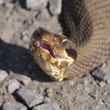





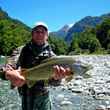
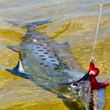



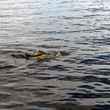
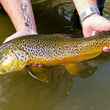



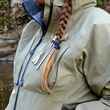
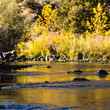



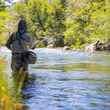
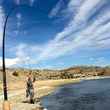

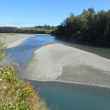
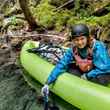
Comments